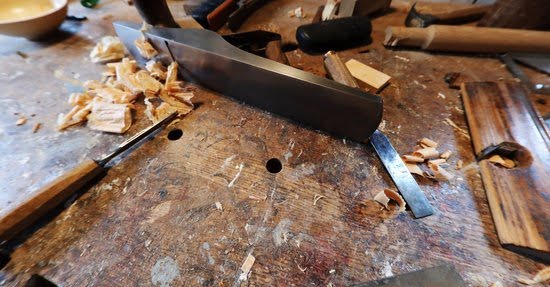Woodwork adds a touch of elegance and sophistication to any space. Whether it’s hardwood floors, wooden furniture, or decorative trims, properly cleaning woodwork is essential for maintaining its longevity and appeal. Neglecting the cleanliness of woodwork can have a significant impact on both its appearance and functionality. In this article, we will explore why cleaning woodwork is crucial and provide valuable tips on how to effectively clean different types of woodwork.
Woodwork comes in various forms, including hardwood, softwood, and painted wood. Each type requires specific cleaning techniques to ensure optimal care. Understanding these variations in woodwork materials is key to preserving their beauty. Additionally, the type of finish on the woodwork also affects the cleaning process. Different finishes may require different cleaning solutions or methods to avoid damaging the surface.
To effectively clean woodwork, it is important to have the right tools and supplies on hand. Soft cloths, microfiber dusters, vacuum attachments, and gentle cleaning products are essential for proper maintenance. By using the appropriate tools and products, you can ensure that your woodwork remains pristine without causing any harm.
In summary, properly cleaning woodwork is vital for preserving its longevity and aesthetic appeal. Identifying the different types of woodwork and understanding their specific cleaning requirements is crucial before embarking on a cleaning routine. Equipping yourself with essential tools and supplies ensures efficient cleaning without causing damage. Now that we understand the importance of proper woodwork cleaning, let’s explore how to identify different types of woodwork and their specific cleaning needs in our next section.
Identifying the different types of woodwork and their specific cleaning requirements
Woodwork comes in various forms, each requiring specific cleaning methods to ensure its longevity and appearance. Understanding the different types of woodwork materials and their cleaning requirements is essential for proper maintenance.
Firstly, it is important to recognize the variations in woodwork materials, such as hardwood, softwood, and painted wood. Hardwood, including oak, maple, and cherry, is highly durable and can withstand more aggressive cleaning techniques. Softwoods like pine or cedar are more prone to scratches and dents, requiring gentler cleaning methods. Painted woodwork needs careful consideration as certain cleaners may damage the paint finish.
In addition to the type of material used, it is crucial to understand how different wood finishes affect the cleaning process. For instance, a woodwork piece with an oil-based finish should not be cleaned with water-based products as it can damage the protective layer. On the other hand, furniture with a polyurethane finish can tolerate mild soapy water solutions for cleaning.
To properly clean woodwork surfaces according to their specific requirements, there are several essential tools and supplies one should have on hand. Soft cloths or microfiber dusters are ideal for dusting off wood surfaces without causing scratches or abrasions. Vacuum attachments specifically designed for delicate surfaces can be used to remove loose debris from intricate areas.
When it comes to cleaning products suitable for woodwork maintenance, it is best to use those recommended by manufacturers or professionals in order to avoid damaging the material. Gentle soap solutions mixed with warm water are generally safe for most types of wood finishes when applied sparingly using a soft cloth. However, abrasive cleaners or solvents should be avoided as they can strip away protective layers or cause discoloration.
By accurately identifying the different types of woodwork and understanding their specific cleaning requirements – such as variations in materials and finishes – you will be better equipped to maintain their appeal and durability over time.
Essential tools and supplies for cleaning woodwork
To properly clean woodwork, it is important to have the right tools and supplies on hand. These essential items will help ensure a thorough and effective cleaning process. Here are some must-have tools for cleaning woodwork:
- Soft cloths: Soft cloths are necessary for dusting and polishing woodwork surfaces. They are gentle enough to prevent scratches or damage while effectively removing dust and debris.
- Microfiber dusters: Microfiber dusters are great for reaching into tight corners and crevices of woodwork. Their fine fibers attract and trap dust particles without spreading them around, making them a perfect tool for regular maintenance.
- Vacuum attachments: Vacuum attachments specifically designed for wood surfaces can quickly remove loose debris or cobwebs from intricate woodwork designs or carvings.
- Cleaning brushes: Different sizes of soft-bristled brushes are useful for dusting hard-to-reach areas, such as in between slats or intricate detailing on wood trim.
In addition to the right tools, using suitable cleaning products is crucial in ensuring that your woodwork stays in good condition. The following supplies should be considered when cleaning woodwork:
- Wood cleaner: Choose a specialized wood cleaner that is formulated to effectively remove dirt, grime, and stains without damaging the finish or the wood itself. Be sure to read the instructions and select a cleaner that is appropriate for your specific type of woodwork.
- Furniture polish: Once the woodwork has been cleaned, applying furniture polish can help enhance its shine and protect it from moisture or other environmental elements.
- Microfiber cleaning pads: Microfiber pads are excellent for applying cleaning solutions onto larger surface areas evenly, ensuring an even distribution of product and reducing streaks or residue.
- Glass cleaner (for windows with wooden frames): If your woodwork includes windows with wooden frames, it may be necessary to use a glass cleaner specifically designed for use on glass and wood in order to achieve streak-free results.
Having the right tools and supplies will make your woodwork cleaning process smoother and more effective. By properly caring for your woodwork, you can maintain its beauty and extend its longevity.
Preparing woodwork surfaces for cleaning
Removing Dust and Loose Debris
One of the first steps in preparing woodwork surfaces for cleaning is to remove any dust or loose debris. Dust can accumulate on woodwork over time and if not removed, it can scratch or damage the surface during the cleaning process. To remove dust, start by using a soft cloth or microfiber duster to gently wipe down the surface. Be sure to reach all nooks and crannies, as dust tends to settle in hard-to-reach areas.
For areas with heavy dust buildup, consider using a vacuum cleaner with a brush attachment. This will help remove stubborn dust particles without causing any damage to the woodwork. Remember to set your vacuum cleaner on a low suction setting to prevent excessive force that may harm delicate wood finishes.
Addressing Stubborn Stains or Grease Marks
In addition to dust, woodwork surfaces may also have stubborn stains or grease marks that require special attention before proceeding with the general cleaning process. For stains caused by spills such as food or beverages, quickly blot up excess liquid using a clean cloth or paper towel. Avoid rubbing the stain as it may spread and become more difficult to remove.
For tougher stains or grease marks on painted woodwork surfaces, try using a mild detergent solution mixed with warm water. Dip a soft cloth into the solution and gently rub the stained area in a circular motion until the stain lifts. Be cautious not to scrub too vigorously as it may damage the paint finish.
If you are dealing with stained or greasy hardwood or softwood surfaces, it is important to consult the manufacturer’s guidelines or seek professional advice to ensure you choose the appropriate cleaning method that won’t harm the wood.
By properly preparing woodwork surfaces for cleaning, you can ensure a more effective and successful cleaning process. Removing dust and loose debris, as well as addressing stubborn stains or grease marks beforehand, will help achieve a clean and well-maintained woodwork surface.
Gentle cleaning methods for delicate woodwork
Woodwork comes in many different forms, from antique furniture to intricate carvings, and each piece requires special care when it comes to cleaning. Delicate woodwork can easily become damaged if not cleaned properly, so it is important to use gentle cleaning methods that will preserve its beauty and integrity.
When cleaning delicate woodwork, it is crucial to avoid using harsh chemicals or abrasive materials that can scratch or damage the surface. Instead, opt for mild cleaning solutions that are specifically designed for wood surfaces. A mixture of mild dish soap and water is often a safe and effective option for gentle woodwork cleaning. Be sure to dilute the soap properly and use a soft cloth or sponge to apply the solution in a gentle circular motion.
In addition to using the right cleaning solution, it is important to be mindful of the amount of moisture being applied to the woodwork. Excessive moisture can cause warping or swelling of the wood, so always wring out cloths or sponges before applying them to delicate surfaces. It may also be helpful to test any cleaning solution on a small inconspicuous area before applying it more broadly.
| Gentle Cleaning Methods | Details |
|---|---|
| Use mild dish soap and water | Mix a small amount of dish soap with water to create a gentle cleaning solution. |
| Avoid excessive moisture | Wring out cloths or sponges before applying them to delicate surfaces. |
| Test on inconspicuous area | Always test any cleaning solution on a small hidden area before applying it more broadly. |
By following these gentle cleaning methods, you can effectively clean and maintain your delicate woodwork without causing any damage or discoloration. It is important to be patient and take the time to properly care for these valuable pieces. With regular gentle cleaning, your delicate woodwork will continue to shine and enhance the beauty of your living space for years to come.
Deep cleaning techniques for heavily soiled woodwork
Deep cleaning techniques are necessary when woodwork surfaces have become heavily soiled and require more intensive cleaning methods. This could be due to ingrained dirt, stubborn stains, or the accumulation of grease and grime over time. Deep cleaning should be done periodically to maintain the beauty and longevity of your woodwork.
To begin deep cleaning heavily soiled woodwork, start by removing any loose debris or dust from the surface. This can be done with a soft cloth or microfiber duster. Be sure to pay attention to corners and crevices where dirt tends to accumulate. For hard-to-reach areas, consider using vacuum attachments specifically designed for woodwork cleaning.
Once loose dirt has been removed, it’s time to tackle specific stains or marks on the woodwork surface. For grease spots, mix a small amount of dish soap with warm water and apply it to the affected area using a soft cloth. Gently scrub the spot in circular motions until the grease is lifted.
For stubborn stains, you may need to use a mild abrasive cleaner suitable for wood surfaces. Always test cleaners in an inconspicuous area first to ensure they do not damage or discolor your woodwork.
For heavily soiled areas that require more than just spot cleaning, a deep cleaning solution can be created by combining equal parts white vinegar and water in a spray bottle. Spray this solution onto the woodwork surface and let it sit for a few minutes to loosen dirt and grime. Then, using a soft-bristled brush or sponge, gently scrub the surface in the direction of the grain. Rinse with clean water and dry thoroughly.
It is important to note that certain types of wood finishes may require specific deep cleaning methods or products. It’s always best to refer to the manufacturer’s instructions or consult with a professional if you’re unsure about how best to deep clean your specific type of woodwork.
Overall, deep cleaning techniques for heavily soiled woodwork involve removing debris, addressing specific stains or marks, and using a combination of gentle cleaning solutions and tools to effectively clean the surface. By periodically deep cleaning your woodwork, you can ensure it remains beautiful and well-maintained for years to come.
Caring for woodwork regularly to prevent long-term damage
The Importance of Routine Cleaning and Maintenance
Caring for woodwork regularly is essential to prevent long-term damage and maintain its beauty. By incorporating woodwork cleaning into your regular household cleaning routine, you can ensure that your woodwork remains in top condition for years to come.
Woodwork is prone to accumulation of dirt, dust, and grime over time, which can dull its appearance and potentially damage the surface. Regular cleaning helps remove this buildup and prevents it from becoming ingrained or causing permanent stains. Additionally, by regularly dusting and cleaning your woodwork, you can reduce the risk of pests such as termites or wood-boring beetles infesting the wood.
Tips for Effective Woodwork Cleaning
To care for your woodwork properly, it is important to use the right techniques and products. Here are some tips to help you clean your woodwork effectively:
- Dusting: Use a soft cloth or microfiber duster to gently remove dust from all surfaces of the woodwork. Pay attention to hard-to-reach areas such as crevices or intricate carvings.
- Wiping: Dampen a soft cloth with a mild wood cleaner or a solution of warm water mixed with dish soap. Wipe down the surfaces of the woodwork in the direction of the grain.
- Removing Stains: For stubborn stains or grease marks on woodwork surfaces, create a paste using baking soda and water. Apply the paste to the stain and gently scrub with a soft cloth until the stain lifts.
- Avoid Excess Moisture: It is crucial not to oversaturate the woodwork with water or cleaning solutions as excessive moisture can cause warping or damage to the finish. Always wring out your cloth thoroughly before wiping down the surfaces.
- Regular Waxing: Applying furniture wax or polish every few months helps protect and restore the woodwork’s luster. Follow the product instructions and buff the surface with a soft cloth for a glossy finish.
With these simple cleaning techniques, you can maintain your woodwork’s natural beauty while preventing long-term damage. Incorporating regular woodwork cleaning into your household routine will not only extend its lifespan but also contribute to a well-preserved and appealing living space.
Do’s and Don’ts of cleaning woodwork
Cleaning woodwork requires a delicate touch to avoid causing damage or scratches. Here are some do’s and don’ts to keep in mind when cleaning your woodwork:
Do’s
- Do dust regularly: Dusting your woodwork frequently helps prevent the accumulation of dirt and grime, which can cause damage over time. Use a soft cloth or microfiber duster to gently remove dust from the surface.
- Do use gentle cleaning products: When it comes to cleaning woodwork, less is often more. Opt for mild, preferably natural, cleaning products that won’t harm the wood finish. Mix a solution of warm water and mild dish soap or choose a specialized wood cleaner recommended for your specific type of woodwork.
- Do test a small area first: Before applying any cleaning product or method to your entire woodwork surface, always test it on a small inconspicuous area first. This way, you can check if there are any adverse reactions or color changes before proceeding with cleaning the rest of the woodwork.
- Do protect your hands: Wear gloves when cleaning woodwork to protect your hands from any harsh chemicals found in some cleaning products. Additionally, gloves can help prevent oils from your hands transferring onto the surface.
- Do dry immediately: After cleaning, make sure to thoroughly dry the woodwork surface with a soft cloth to prevent moisture from seeping into the wood and causing damage.
Don’ts
- Don’t use abrasive materials: Avoid using abrasive scrub brushes, scouring pads, or rough cloths when cleaning woodwork as they can scratch or dull the finish. Stick to soft cloths or microfiber dusters instead.
- Don’t oversaturate: When using liquid cleaners on woodwork, be cautious not to oversaturate the surface. Excessive moisture can seep into the wood and lead to warping or swelling. Use a damp cloth rather than a soaking wet one.
- Don’t use ammonia-based cleaners: Ammonia can strip away the protective finish of the woodwork and cause discoloration. Avoid using any cleaners that contain ammonia when cleaning your woodwork.
- Don’t use excessive force: When scrubbing or wiping down your woodwork, apply gentle pressure. Excessive force can cause scratches or damage to the surface, especially on delicate or painted woodwork.
- Don’t forget to protect the surrounding area: Before you start cleaning, make sure to cover nearby furniture or flooring with plastic sheets or towels to protect them from any accidental spills or splashes.
By following these do’s and don’ts, you can safely and effectively clean your woodwork without causing any harm or compromising its appearance. Remember to always read and follow the manufacturer’s instructions for cleaning specific types of woodwork for best results.
The benefits of professional woodwork cleaning services
Professional woodwork cleaning services can offer a range of benefits that can greatly enhance the maintenance and longevity of your woodwork. While regular DIY cleaning is important, there are certain instances where seeking professional assistance can be advantageous.
One of the main benefits of hiring professionals for woodwork cleaning is their expertise and knowledge in handling different types of woodwork. They are familiar with the specific cleaning requirements and techniques for various materials, finishes, and designs. Professionals have access to specialized tools and products that may not be readily available to homeowners. This means they can provide a more thorough and effective cleaning process, leaving your woodwork looking fresh, polished, and well-maintained.
In addition to their expertise, professional woodwork cleaners can save you time and effort. Cleaning woodwork surfaces thoroughly can be a labor-intensive task, especially if there are intricate details or hard-to-reach areas involved. Hiring professionals allows you to relax while they take care of the work for you. They have the experience and efficiency to complete the job quickly without compromising on quality.
Furthermore, professional cleaning services often offer additional services beyond simple dusting and wiping down surfaces. They may provide treatments such as polishing or refinishing to restore the natural beauty of your woodwork. These extra steps can help revitalize worn-out or dull-looking woodwork, giving it a new lease on life.
While DIY cleaning is sufficient for regular maintenance, considering professional woodwork cleaning services periodically or when needed can help ensure that your precious wood accents remain in top condition for years to come. Investing in professional care ensures that you receive expert attention while saving you time and effort in maintaining your treasured woodwork pieces.
Conclusion
In conclusion, understanding the importance of properly cleaning woodwork is crucial for its longevity and appeal. Neglecting to clean woodwork can have a negative impact on its appearance and functionality. By regularly maintaining the cleanliness of woodwork, you can ensure that it remains in good condition and enhances the overall aesthetic of your living space.
Identifying the different types of woodwork and their specific cleaning requirements is essential. Variations in wood materials, such as hardwood, softwood, or painted wood, require different cleaning approaches. Additionally, understanding how different wood finishes affect the cleaning process can help you select the appropriate cleaning method and products.
Having the essential tools and supplies for cleaning woodwork is necessary for effective maintenance. Soft cloths, microfiber dusters, vacuum attachments, and other tools should be readily available. Equally important are suitable cleaning products designed specifically for woodwork. Using the right tools and supplies will ensure that you can clean your wood surfaces effectively without causing damage.
Caring for your woodwork regularly is key to preventing long-term damage. Incorporating woodwork cleaning into your regular household cleaning routine ensures that it remains beautiful and well-preserved over time. By following safe cleaning practices and avoiding common mistakes, you can prevent scratches or other forms of damage while achieving gleaming results.
Ultimately, by implementing proper woodwork cleaning techniques, you can effortlessly achieve gleaming and well-preserved surfaces throughout your home. Not only will this enhance the beauty of your living space, but it will also contribute to the overall durability of your woodwork. So take the necessary steps to care for your woodwork today and enjoy its appeal for years to come.
Frequently Asked Questions
What is the best thing to clean woodwork with?
The best thing to clean woodwork with is a mild soap solution. This can be made by mixing a small amount of gentle dish soap with warm water. Using a soft cloth or sponge, dip it into the soapy water and gently scrub the woodwork in circular motions.
Make sure to avoid using excessive amounts of water as this can damage the wood. After cleaning, it’s important to dry the woodwork thoroughly to prevent any moisture from being absorbed into the wood.
What should you not clean wood with?
It is important not to clean wood with harsh chemicals or abrasive cleaners. These can cause damage to the finish and strip away any protective coatings on the wood surface. Avoid using bleach, ammonia-based cleaners, or any products containing solvents. Additionally, avoid using rough scouring pads or steel wool, as these can scratch and damage the wood.
What is the best thing to clean white woodwork with?
When cleaning white woodwork, it’s important to be cautious and choose cleaners that won’t cause discoloration or damage to the paint or finish. A gentle all-purpose cleaner diluted with water is usually sufficient for regular cleaning of white surfaces.
Alternatively, vinegar diluted with water can be used as a natural cleaner for white woodwork. It’s advisable to test any cleaning solution on a small, inconspicuous area before applying it more broadly on white surfaces to ensure compatibility and avoid potential stains or other unwanted effects.

Hi everyone! I’m a woodworker and blogger, and this is my woodworking blog. In my blog, I share tips and tricks for woodworkers of all skill levels, as well as project ideas that you can try yourself.





